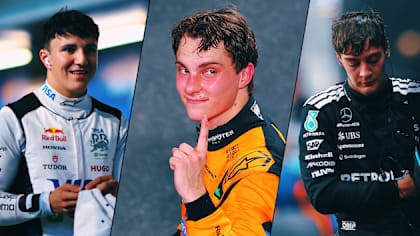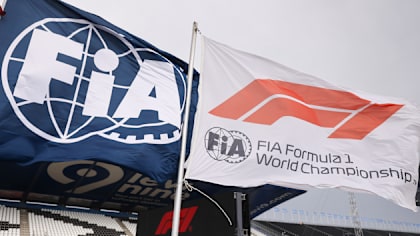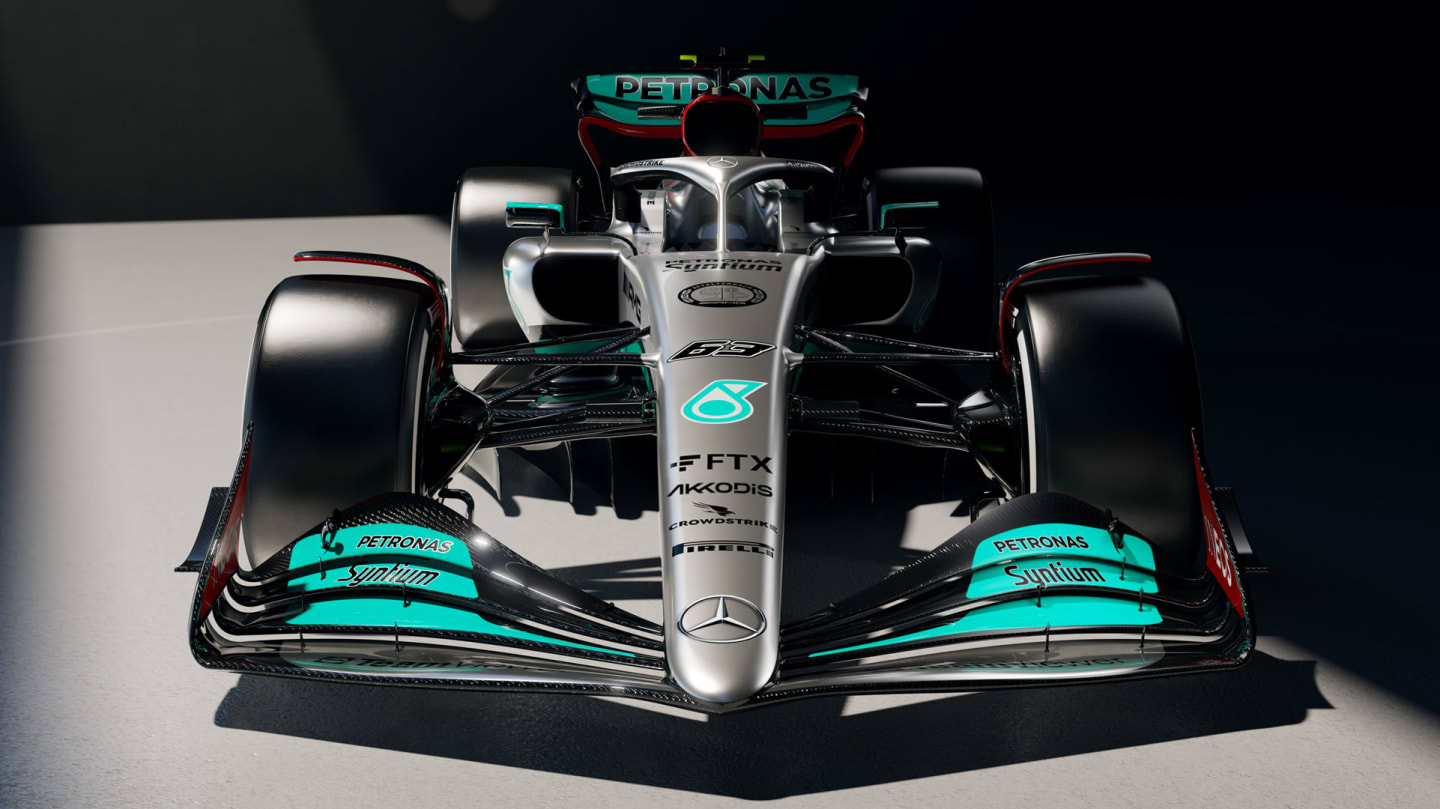
Technical
ANALYSIS: Delving into the details on the new-for-2022 Mercedes W13

Share

Long and slim is the overriding theme of the Mercedes W13. Although wheelbase has been limited to a maximum of 3,600mm under the 2022 regulations, the Mercedes design team has retained its favoured way of using the length of the car to package it narrowly.
Narrow pods, wide side channels
The narrow sidepods made possible by the packaging have two important aerodynamic implications.
It helps keep outwash generated further forward to stay outwashed. Because the underfloor is physically further away from the airflow coming off the front wing and front wheels, there is less chance of this turbulent flow being sucked beneath the floor from the side and reducing the effectiveness of the venturi tunnels, which generate around half of the car’s total downforce.
READ MORE: How Mercedes plan to regain F1 supremacy
Secondly, it has created enormously wide side channels between the sidepod and the outer edge of the floor – way wider than on any other car revealed so far. This has created a very big volume for the air directed around the sidepods to meet up with the airflow exiting the tunnel diffuser. This will create a significant pressure differential between the top surface of the channel and the underfloor venturis, creating downforce.
In order to maximise the distance between the front axle and the beginning of the sidepods within the permitted wheelbase, the power unit seems to have been mounted a long way back (as also on the Mercedes-engined Aston Martin), implying a short gearbox casing. It can be seen how the engine airbox and the associated plumbing begins much further behind the cockpit than on, say, the Ferrari.
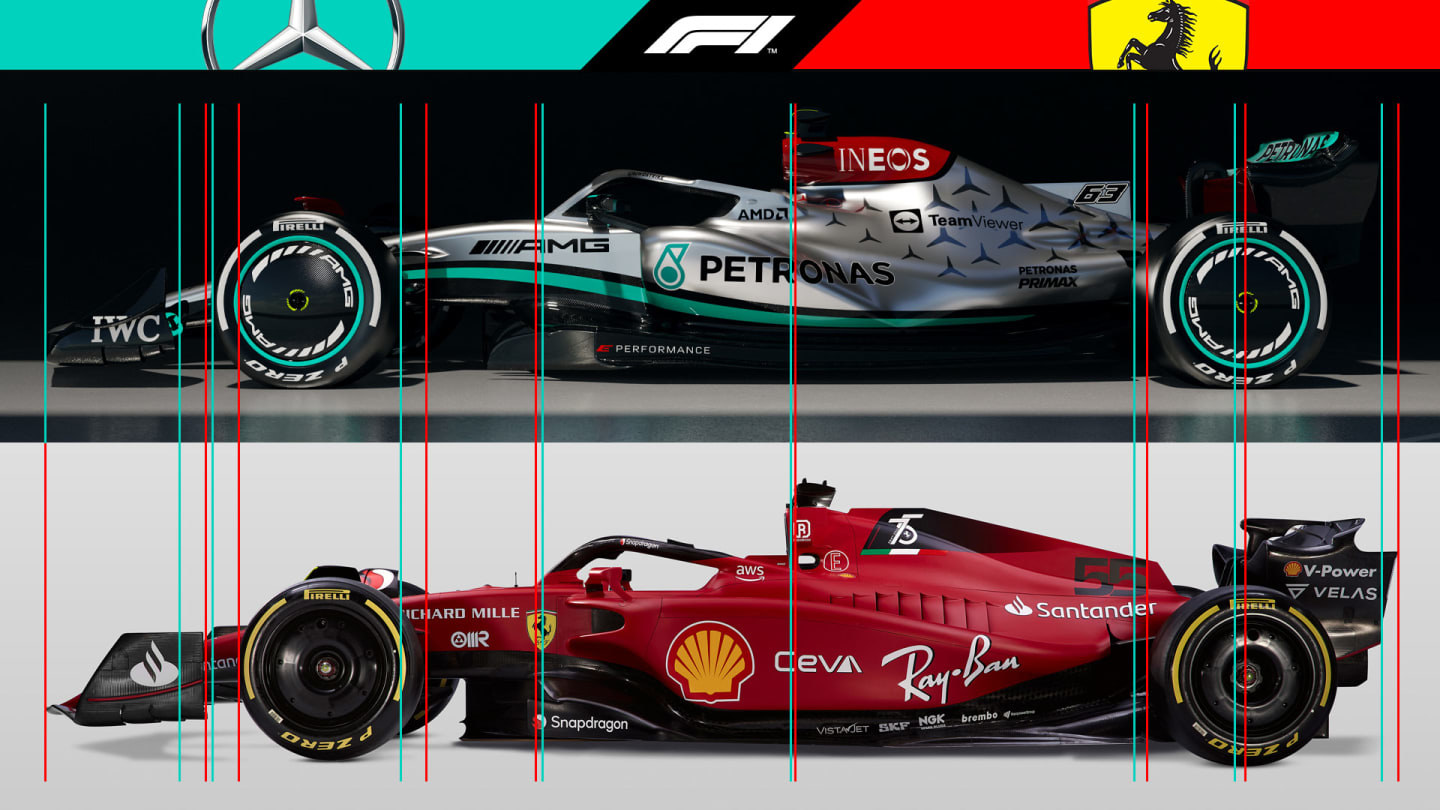
The comparison between the W13 and the F1-75 (below) shows the engine being positioned further back on the Mercedes, a small shark fin and many other differences
More aerodynamic details
Within this narrow sidepod/rearward-placed engine layout are several aerodynamic niceties.
The very long sidepods are extremely sophisticated in their shaping, with a significant undercut on the front corners spreading down the sides. There is a downward ramp, but only at the front, with the upper contours of the pods then rising gently upwards to the radiator exit at the back, roughly in parallel with the shape of the venturi tunnels further down.
The line of the lower bodywork seems to suggest that these tunnels feature a double kick, with a smaller expansion chamber part-way down their length before the full up-kick diffuser at the back.
READ MORE: Hamilton says winter reset allowed him to get 'attacking again' with Mercedes for 2022
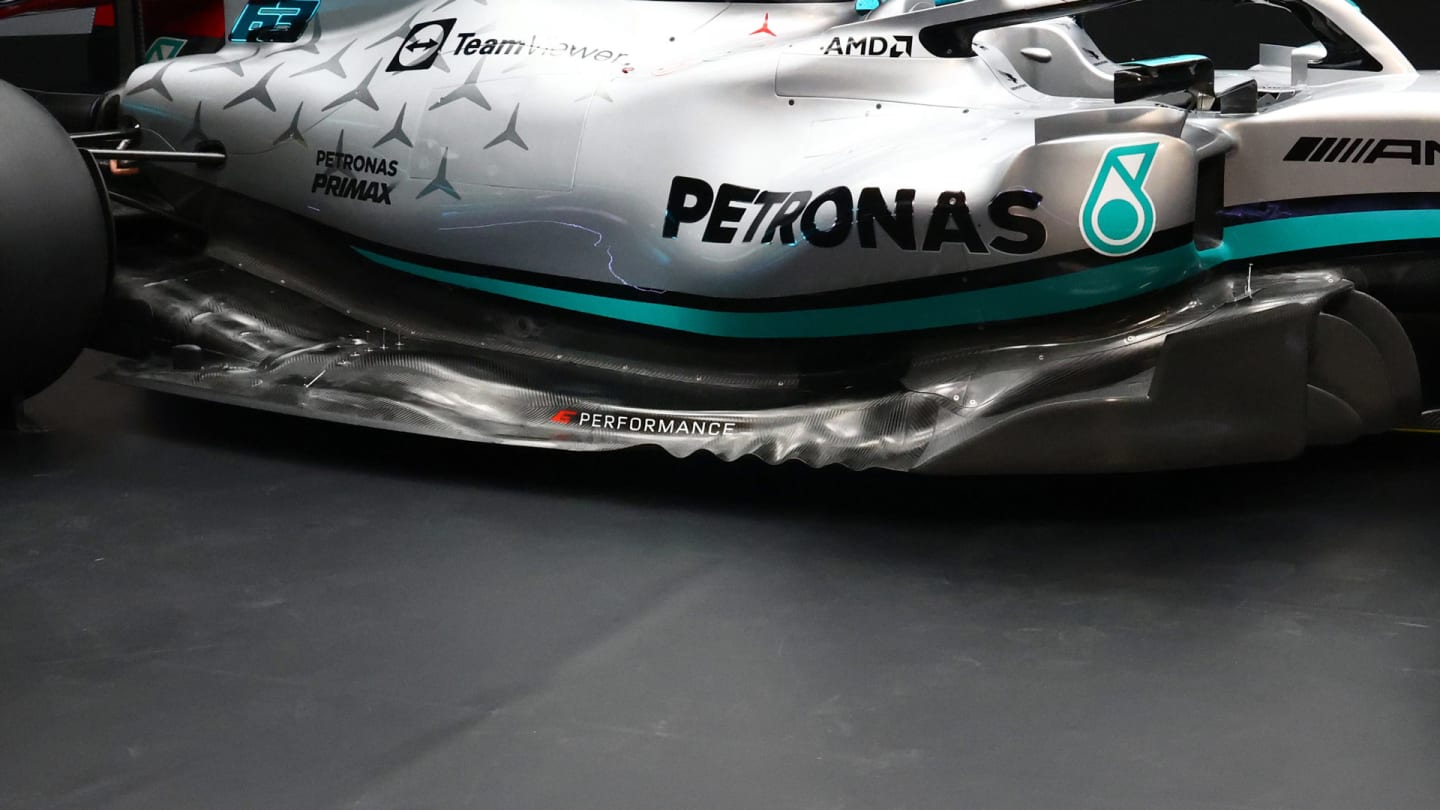
The sidepods of the W13 are highly detailed and feature a significant undercut, as seen here
The inlet for these tunnels appears to be tiny but much higher up than on other cars we’ve seen. This combination implies a strong suction effect into that tunnel, maximising the speed of the airflow through them as well as influencing the airflow around the inlet, which will allow it to be directed either towards those channels down the side or out-washed further out.
)
Front comparison of the W13 and F1-75 (R) showing that the Mercedes' venturi tunnels are set higher up
The long nose merges with the lower wing element in the way we’ve seen on most other cars, hanging below the nose with the second element merging into the nose’s sides. This will have been optimised to give the fastest, smoothest flow possible to the very hollowed-out underside of the nose, the negative pressure of which will be exerting a strong pull on the oncoming air.
The faster the air can be made to move in this forward part of the car, the more energy is available to feed the flow into the tunnels, the side channels and to the desired – but difficult to achieve under these regulations – outwash.
AS IT HAPPENED: Watch Mercedes unveil their 2022 W13 car
At the back it has been possible to fit in a small shark fin to aid with stability in yaw – as the direction of the car to the oncoming air changes in the early part of the corner, so that change is introduced more progressively onto the rear wing by that fin.
As would be expected of a Mercedes it looks an extremely well thought-out and sophisticated piece of kit, one with yet another very distinctive take on the new regulations
More on the 2022 Formula 1 car launches
- 'Brave' Ferrari are riding high on confidence as they hunt for championships
- Massive variation and ingenious solutions – What we learned from the first week of 2022 launches
- ANALYSIS: Williams forge their own path with FW44 design
- ANALYSIS: The intriguing design features on Aston Martin’s new AMR22
- Can Williams make another step forward in 2022?
- ANALYSIS: The fascinating design features – and Red Bull cues – on AlphaTauri’s AT03
YOU MIGHT ALSO LIKE
FeatureF1 Unlocked 5 Winners and 5 Losers from Saudi Arabia – Who leaves Jeddah the happiest and who has work to do?
News Doohan praises Alpine for removing pressure around his future with the team
News GM Performance Power Units approved as F1 power unit supplier
FeatureF1 Unlocked THIS WEEK IN F1: 10 tough quiz questions on the Saudi Arabian Grand Prix

